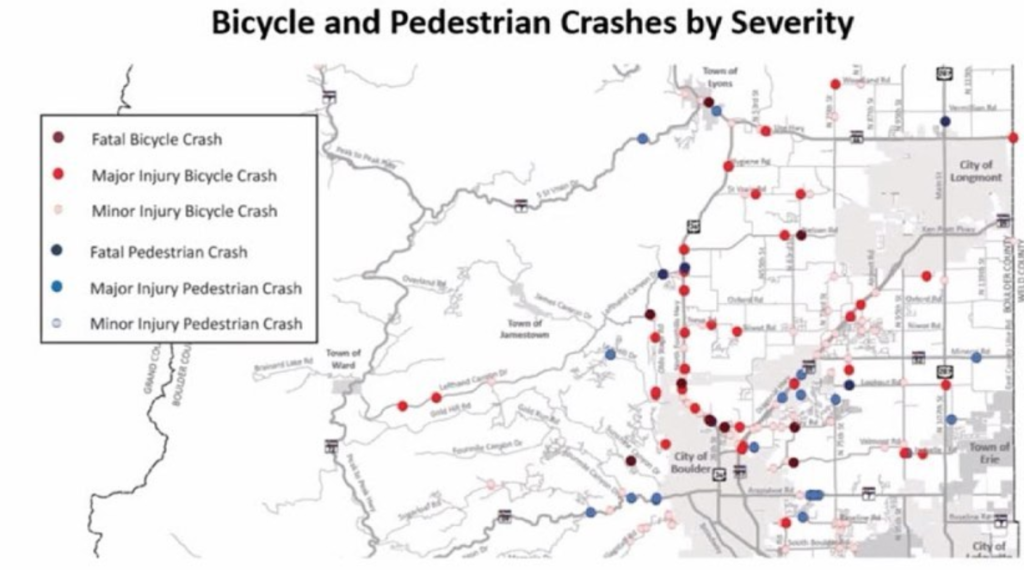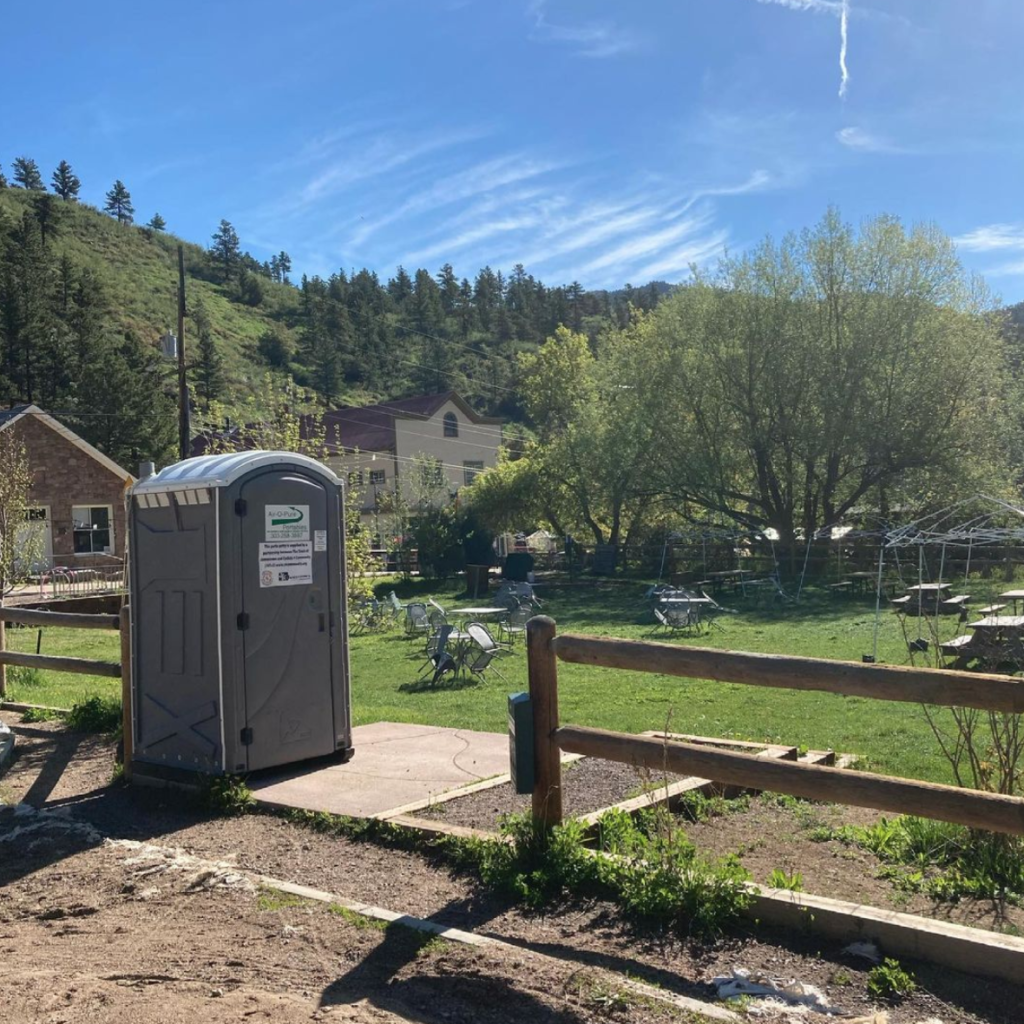C4C’s Current Program Service Delivery
C4C is in the midst of delivering on two significant programs services. After about two years of C4C staff work in partnership with Boulder County, a grant application is going out the door from Boulder County to the Denver Regional Council of Governments, “DRCOG.” The application is now up to a $400,000 request. If awarded, the funds will largely be applied to a feasibility study for a Boulder to Lyons separated multi-use path.
A feasibility study is the first real and necessary step in achieving a goal involving such infrastructure. Additionally, the entire process will take years of work. But, the data is clear, this is an area that needs a separated multi-use path in order to achieve safety.

Coincidentally, the separate CO119 Diagonal Highway project also contains a separated multi-use path that will help address the visible problems there too. Together, a North Foothills Path and 119 Path will save lives.
The second program service that C4C is delivering on is a partial disbursement of the eventual $27,000 to Bicycle Colorado’s “Shift Driving” program. The Shift Driving program will create high quality online content to educate drivers and bicyclists on the laws and practices for sharing the road.
The intention here is to help fund a program that can be broadly scaled to reach tens of thousands of drivers and broadly adapted over time to a variety of applications from drivers education courses to insurance company applications to diversion courses for drivers who can avoid punishment by taking the course after being pulled over.
With Bicycle Colorado’s fiscal year ending soon, C4C has disbursed an interim $22,000 to Bicycle Colorado to help fund the project. The balance of roughly $5000 will continue to be raised by C4C, half of it being donations and the other half being a match from C4C’s treasury.

Shift Driving grows out of Bicycle Colorado’s Bicycle Friendly Driver Program.
Thanks to your support, C4C is able convert donations and support into program services for the good or our communities. After weathering the pandemic, C4C will look to the same communities for fundraising support in the autumn of 2021 and in May 2022 at Crank It Forward.
Ongoing Advocacy
C4C has a two part approach to its general advocacy approach. It’s important to continue to partner with communities on things like the Jamestown porta-potty which makes a big difference to a small town such as Jamestown. In the same vein, C4C continues to partner with the community, especially Boulder County, on shared interests and funding needs like community matching contingencies that often accompany grants.

Following the 2013 floods, C4C has continued to pay for the seasonal porta-potty in Jamestown, a favor to everyone involved.
The second part of C4C’s advocacy is its outcome goal of multi-modal network connectivity as indicated in the Boulder County Transportation Master Plan. The word “outcome” is used because transportation projects can get bogged down in processes that take on a life of their own, straying from desired outcomes. “Multi-modal network connectivity” can sound like jargon. It means bicycle and pedestrian infrastructure that connect users from start to finish on their trip.
Network connectivity is the defining hallmark of a system that delivers safe outcomes, reducing or eliminating killed and seriously injured. Along the way, good infrastructure helps with positive outcomes around induced demand, emissions for health and climate, live-ability and land use, and accountability standards.
C4C is engaged with this work in the following ways.
- C4C and Community Cycles are working together with Boulder County to draft the framework of paved multi-use paths, soft surface Regional Trails, bike-able shoulders, and other multi-modal infrastructure plans indicated in the TMP. The goal is to connect every transportation project in Boulder County across levels and jurisdictions in an economical manner.
- C4C is hoping to converse with Boulder County about restarting the Regional Mountain Trails (see page 10) project that was abandoned due to the chaos of the 2013 floods. This would re-activate another level of multi-modal network connectivity. (C4C has had initial conversations with the Boulder Mountain bike Alliance on this topic. Thanks to the BMA for considering the topic.)
- C4C is working with Boulder County and a resident on Lee Hill on improving safety on Lee Hill. The road is a representative example of mountain roads that resist easy solutions due to the cost of engineering in such geologies and limited rights-of-way. C4C’s working goal is to examine improved signage consistent with emerging standards in the MUTCD in order to achieve safer outcomes. Then, in the long run, engineering solutions can follow.
- On two project locations, CO52 and CO42, C4C is working with partners to recommend that the projects be outcome focused on multi-modal network connectivity. Currently, one plan for CO52 calls for widening the road to four to seven lanes. Conversely, C4C is recommending instead that there be a separated multi-use path in the right of way, a path that’s part of multi-modal network connectivity for better safety, induced demand, emissions, live-ability, and accountability outcomes.
- With SB260 now signed into law, it’s time to get going on this work.

